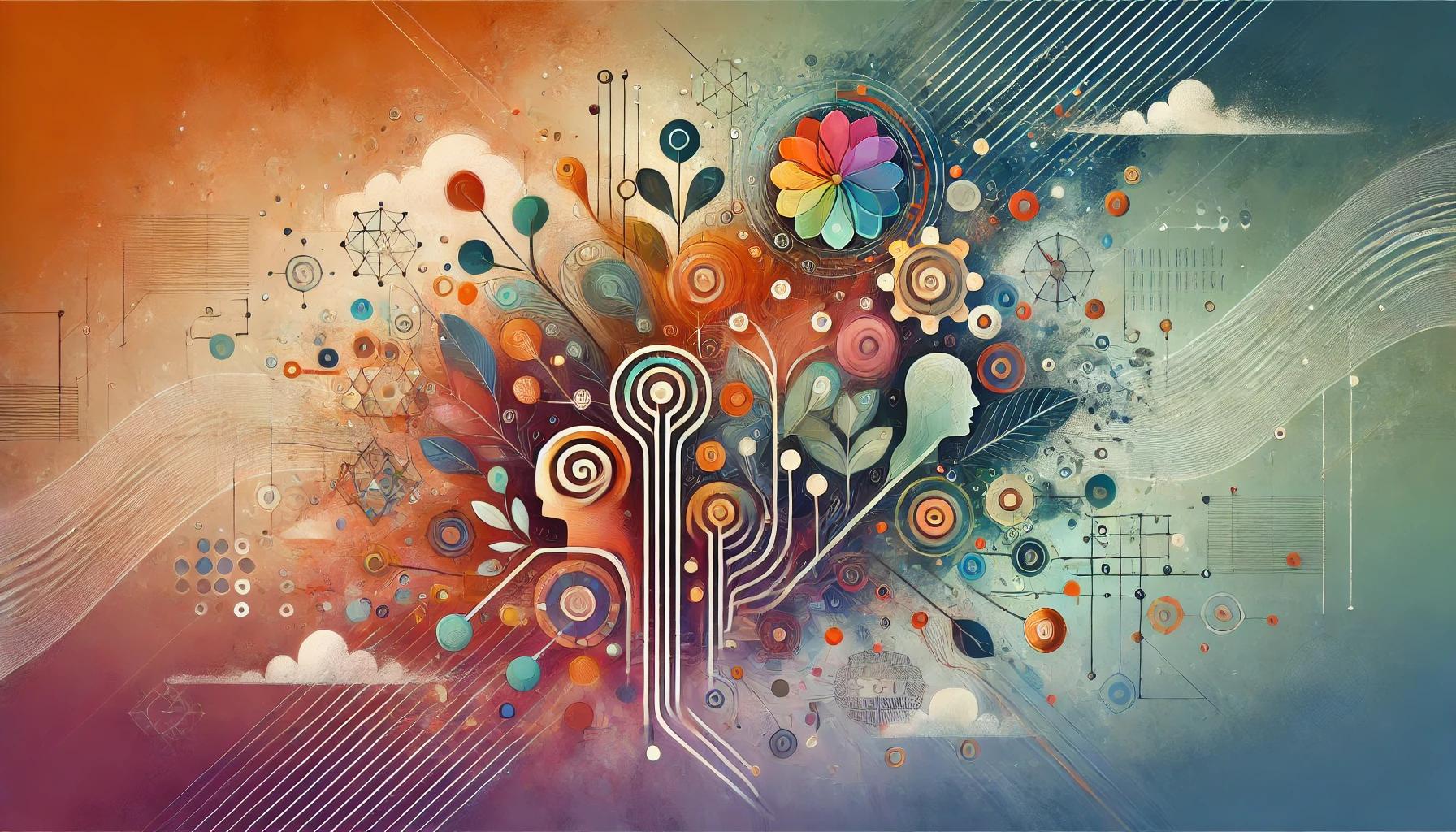Transformation in the age of AI
A continuous skill-building program
The rapid pace of technological change, accelerated by recent advances in generative AI, moves the transformation dial further for organizations. Reskilling is an imperative, but skill building is different in this continually evolving age of AI, and organizations looking to survive – and thrive – need to rethink their approach.
Thinking differently about transformation
The term ‘Digital Transformation’ has been bandied about a lot in recent years.
It suggests a large-scale change, an about-turn, perhaps even a level of drama. However, the reality is that the term has been with us for a couple of decades, during which time many businesses have been through more than one digital transformation. From the rise of the internet through to today’s game-changing advances in gen AI, the chances are that many people in the workplaces of today have already navigated their way through a number of digital transformations.
In truth, transformation is probably not even the most appropriate word at this stage; it suggests – or at least implies – after all, a single event, a conversion from state A to state B. In business today, however, the transformation concept means something a bit different. We are talking about an environment of rapid, continuing and ongoing transformation. Change upon change.
In the banking sector, the last decade or so saw the tremendous impact of the rise of Fintechs, which gave new impetus to transformation. These disruptors, many of which emerged after the 2008 global financial crisis, drove profound changes in meeting the needs of banking and financial services customers, providing easier, faster, and often cheaper access to retail banking services. These changes were transformative for customers and left traditional banks with no option but to compete on new terms.
Digital-first challengers continue to keep traditional banks on their toes. In this context, the financial sector has much in common with many other sectors, both long-standing and new.
The rise of AI and the breakneck speed of gen AI advancements have only accelerated the complexities of doing business. Many organizations now find themselves in a never-ending state of transformation that requires an agile mindset and a burgeoning skill set.

Making way for AI
With the latest surge of AI capabilities, the push for transformation has taken another dramatic leap forward.
Recent advancements, particularly in the field of large language models (LLMs) and gen AI, have resulted in an acceleration of change that is unlikely to slow down for the foreseeable future.
Digital transformation today is more a state of being than an event. In this context, what many organizations and the people who work for them need is a capacity to adapt continuously to, and successfully navigate, a state of continuous change.
For organizations looking to integrate and deploy new tech capabilities, and to serve the continually evolving needs and expectations of customers, the shifting landscape requires a different way of thinking, from how teams are structured to how new capabilities and services can be rolled out at speed – all with deployment times that sometimes need to be in weeks rather than months.
It requires a mindset that adapts to and embraces continuous change and an ability to rapidly innovate and deliver on whatever change is needed, from the top down and right across the organization.

What do organizations need to do to thrive in this era of continuous change?
Mindset, skillset, and culture
At the heart of any successful organizational initiative are the people who will support and deliver on it. Successfully transforming to thrive in an AI world will be underpinned by a focus on equipping people with the appropriate skillset and mindset.
Technical skills are without doubt an essential part of the picture and will continue to shift as the shelf-life of skills continues to shorten.
Softer skills such as critical thinking, problem-solving, creativity, growth mindset, and agility will all also be key markers for success. Companies that can rapidly innovate and deploy new solutions will have a clear competitive advantage – bringing innovation capabilities to the fore.
Developing and honing these skills will be an ongoing process. Organizations need to cultivate a culture where their employees can refine and upskill repeatedly and continually in increasingly short timelines.
They need to shape an organization that can thrive in an environment where change is a constant and the ability to navigate change is a key pillar for success.
Key Insights from the Future of Jobs Report
According to the World Economic Forum’s Future of Jobs 2023 report:
Businesses expect that 44% of their workers’ core skills will be disrupted in the next four years, as technology is moving faster than organizations can design and build up their training programs.
Top skills considered most important include:
- Analytical thinking
- Creativity
- Resilience, flexibility, and agility
- Motivation and self-awareness
- Curiosity and lifelong learning

Empowering the workforce for continuous change capability
So, what do (HR and Learning) organizations need to empower a workforce that can handle transformation of this nature?
Here are six key areas:
1. Learning
Constantly monitor skills requirements. Keep a close eye on both technical and human skills requirements and evolve the offering as needs change, with a training ecosystem that facilitates a self-determined learning model, including both formal and informal learning, and with flexible digital learning options alongside offerings for face-to-face and collaborative learning.
2. Mindset
Mindset is key to success in this environment, and the good news is that it can be learned. Provide opportunities to cultivate a growth mindset and a culture of continuous learning, where curiosity is encouraged, and agility is recognized and rewarded. Agile development, one of curiosity, asking great questions rather than assuming they ‘know it all’.
Monitoring Skills Needs – Gather All Perspectives
The Internal Perspective
Run flash learner surveys to canvas employees on where they see their learning needs. Evaluate their responses alongside monthly data reports – for instance, on most used learning resources and most searched topics in your learning system – to help identify skills in demand, problem areas, etc.
The External View
Recruitment and talent data from external providers can be leveraged to provide current market insights on skills needs and demands in your industry. This can provide powerful insights drawn on massive amounts of data, mapping skills taxonomies, and predicting needs and demands with increasing accuracy and intelligence thanks to AI. Helping you stay aligned with not only internal patterns but also external factors and competition.
3. Culture
Culture of growth, where failure is embraced, and continuous learning is rewarded. Double-down on support for collaboration and peer learning, where both learning and working environments facilitate collaboration. Build collaboration into learning programs and create collaborative spaces in which cross-functional teams can share and learn from each other, to deliver on increasingly complex projects.
4. Focus on the vision
Make sure the vision is clear to all and shared, and that learning is recognized and championed as core to the vision. An emphasis on faster cycle times, with an iterative approach, may be fundamental; however, the vision is still key, and keeping sight of it is crucial.
Building the Culture You Need is its Own Project
- Fostering a learning culture and a growth mindset is a significant project. It should be given its own project identity, with its own logo and byline.
- Develop quarterly or monthly themes with strong messages that are aligned with the vision. Promote, facilitate, and provide incentives for all employees to get on board.
- Create a cross-team and cross-discipline platform where individuals can share insights, raise questions, and look for guidance or help. Encourage and reward people for asking questions and daring to share.
- Have leaders actively involved in supporting the culture drive: communicate directly, participate in sharing and exchanging ideas, and recognize employee commitment to both personal and organizational growth.
5. Leadership
In any change or learning initiative, leadership support is a crucial determinant of success, particularly after the initial stages. Half of all change initiatives fail. Many start off well, but many fail to sustain momentum. Leaders at every level need the skills and the mindset to champion the drivers for success in this environment: prompting, encouraging, incentivizing and rewarding, and exemplifying what it means to be adaptive. An ATD study found that organizations where leaders communicated the importance of learning to a high extent were significantly more likely to be high performers.
6. Focus on people
Much has been made of the gains for organizations who adopt AI: cost savings from more efficient ways to produce content, productivity gains, cost savings, faster times to ramp up skills, and so on. There is often scant acknowledgment, however, of the inevitable sense of deep uncertainty all this creates for employees.
The success of efforts to deliver on the vision will all be underpinned by an employee base that sees the potential for them as humans and employees to be part of the future in a positive way, in a world where they too stand to benefit.
Where AI integration is perceived not as a threat but with a human-centered approach that will facilitate a powerful partnership between human and technology, a tool that can augment and support employees and help them flourish.
There are also rewards to be gained for employees who embrace AI positively and adapt to the changes that brings: from building out enriched career-advancing skills to more time to focus on the most fulfilling aspects of their work. Organizations have a responsibility to help employees see the potential for them and to help optimize the benefits to the employee.
Employees who are empowered to work with AI, to embrace its benefits, and who are encouraged and recognized, will stay with the organization, and intensify their contributions in ways that benefit both the organization and the individual.

Successfully reskilling in this context asks a lot, and it must extend well beyond the learning organization. It calls for an overall organizational environment in which the initiative can succeed, including a growth mindset that recognizes the opportunity, potential, leaders who champion it, and employees who both trust and believe in it.
As a recent Harvard Business Review piece suggests, reskilling is, in effect, a change management program, underpinning the significance of the scale of such an initiative in the current business environment. A standout point for this kind of change management program is that it is one in which we have to recognize that, while there will be definitive and measurable markers of milestones and accomplishments, it is not necessarily a program with a clear finish line. Surviving, evolving, and thriving in the age of AI is about a mindset that recognizes, accepts, and respects being in a state of continuous transformation.
As such, it demands a continually dynamic approach to building, evolving, and anticipating the skills your business needs, guided by a future-state AI vision for your organization. It is undoubtedly going to require an all-hands-on-deck approach from the top down, across the organization.
This is transformation, but not as we know it.
REFERENCES
- https://www.weforum.org/agenda/2023/05/future-of-jobs-2023-skills/
- https://www.forbes.com/councils/forbesbusinesscouncil/2024/03/05/the-future-of-ai-skill-and-talent-development-in-the-workforce/
- https://www.td.org/atd-blog/top-executives-should-be-champions-of-a-learning-culture/
- https://hbr.org/2023/09/reskilling-in-the-age-of-ai/

